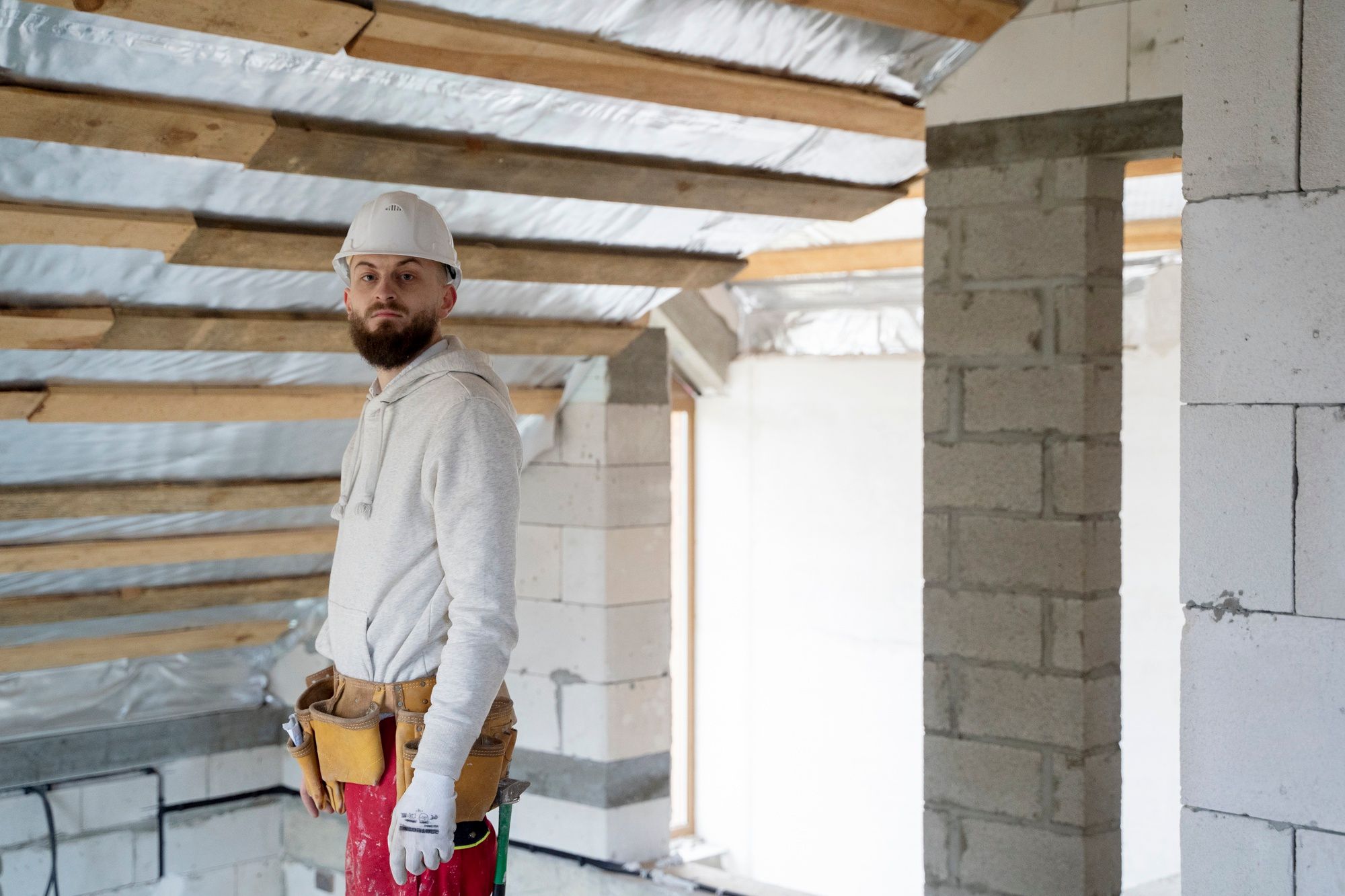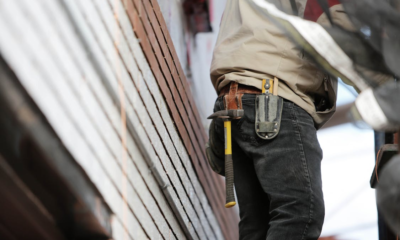Construction
Building Blocks: The Evolution of Plasterboard in Modern Construction
Published
5 months agoon
By
Abdus Subhan
Plasterboard, also known as drywall or wallboard, has become an essential building material in construction projects over the past century. Its lightweight yet strong and versatile properties have made it a staple component for both interior and exterior applications. But plasterboard has come a long way from its origins to the advanced products available today. By examining the history and ongoing innovations in plasterboard materials and installation methods, we can better understand its invaluable role in modern building techniques.
Early History
The predecessor to modern plasterboard was the “Sackett Board,” created by the Sackett Plaster Board Company in the early 1900s. It consisted of multiple layers of plaster set between four long pieces of wool felt paper that ran the length of the board. This was an improvement over the inconsistent application of wet plaster directly onto wall studs or masonry. The Sackett Board could be mass-produced in convenient sizes, with standardized thickness and more predictable performance. However, it was still heavy, difficult to cut and install.
Such plaster boards required storage on-site without warping or damage. Eventually, companies figured out that gypsum embedded between paper cover sheets created a lighter, easier to handle board with moisture-resistant properties. Gypsum was abundant, fire-resistant, and easy to mine and refine. These early forms of drywall built upon the Sackett Board laid the groundwork for what we now rely upon today for affordable interior surfaces in our homes and buildings.
Wartime Spurs Innovation
Plasterboard demand and enhancements grew rapidly during World War II due to frugal building practices and material rationing at the time. Insulation Specialist InsulationPoint noted our reporter that the need for affordable, low-maintenance housing for an influx of factory workers drove many of the technological advancements. Manufacturing methods became more automated, allowing production output to increase.
New chemical additives were added to the core gypsum layer, improving fire resistance and flexibility. Board weights went down, while smoothness and strength improved. By the 1950s, drywall was the standard for new construction and renovation for walls and ceilings in North America. As materials, production methods, and installation tools evolved through the mid-20th century, drywall became easier to transport, cut, install, and finish. This cemented its status as a fundamental building block in construction.
Modern Materials and Techniques
Today’s drywall represents over a century of innovation built upon those early forms of plasterboard. There have been four major material advances:
Lightweight Drywall – Typical 1⁄2-inch board now weighs around 1.6 pounds per square foot, down from weights double or triple that amount 50-100 years ago. This allows for larger sheets to be maneuvered during installation. It also reduces structural demands compared to heavier plaster walls.
Moisture/Mold-Resistant Drywall – Moisture and mold resistance has been built into most modern drywall through additives to paper cover sheets and gypsum cores. This prevents sagging, decomposition and problems during storage and once installed. It provides reliability in moisture-prone areas.
Soundproof Drywall – Specialized boards reduce airborne noise transmission. Soundproof drywall contains viscoelastic polymers and/or other proprietary materials that dampen sound vibrations. Pre-assembled, multi-layer products achieve Sound Transmission Class (STC) ratings of over 50 decibels. This added functionality makes them useful near airports, highways and in recording studios.
Fire-Rated Drywall – Fire-rated drywall achieves fire resistance ratings from one to four hours. The gypsum core contains glass fibers, vermiculite, and other additives to prevent burn-through. These boards withstand intense heat in commercial structures and residential firewalls.
Innovations in tools and techniques have also accelerated installation times, cut costs, and improved results for the modern drywall contractor. Power sanders make finishing faster with better joints between panels. Digital measuring tools increase cutting accuracy to reduce waste and ensure tight seams. And screw guns allow fast, consistent application of drywall screws. These tools exemplify how far we’ve come from early 19th century wet plaster application!
The Future of Drywall
We will continue seeing innovative improvements in drywall functionality and installation methods. Prefabricated assemblies with integrated drywall layers, insulation and vapor barriers will transform job sites. Instead of assembling multiple building components on-site, large sections will arrive pre-built for faster assembly.
Technologies like 3D printing may someday construct whole drywall panels, eliminating steps between mining raw gypsum and installing finished boards. Materials science will also push drywall capabilities further—embedding technology into walls or developing new sustainably-sourced components beyond dependable gypsum.
And modern moisture/sag/mold-resistant properties will become even more reliable as homes and buildings achieve higher airtightness for energy efficiency. Drywall must withstand greater temperature/humidity extremes between indoor and outdoor environments without compromise. The next generation of building scientists and manufacturers will ensure drywall adapts to our changing environmental and technological landscape.
Sustainable Drywall
As we look to reduce the environmental impact of construction, more focus is being placed on sustainable drywall materials and fabrication methods. This includes increased recycling of waste gypsum into new products, as well as diversifying raw material sources beyond virgin gypsum rock mining. Several companies now produce drywall composed partially of recycled materials, such as coal combustion residuals. There is also research around using desulfurized gypsum from power plants or fibrous gypsum formed as a byproduct in other manufacturing processes.
The plasterboard industry aims to continue improving drywall’s green credentials through technological and procedural advances that consider its full life cycle footprint. The goal is effective, ethical solutions that balance performance with conservation.
Final Words
From its early 20th century roots as “Sackett Board” to the fire-rated, soundproof, prefabricated panels of tomorrow, drywall’s evolution underscores its significance in modern building techniques. Lightweight, affordable, and versatile, plasterboard in its current form will continue seeing use in residential and commercial construction projects for decades to come. But innovations in materials, fabrication methods and installation tools will unlock greater functionality and reliability in exciting ways. Drywall’s adaptable nature will support structures for future generations, just as it provided critical housing needs over the past hundred years. Wherever we need affordable, customizable surfaces in our built environments, drywall in some form will remain fundamental building blocks.
Recent News


4 Amazing Trips for Your Family
Choosing somewhere for a family vacation that would pique the attention of adults and kids alike can be a fun...


Customising Your Makeup with Blendable Blush Options
In cosmetics, one’s face is a canvas for self-expression and creativity. Among the myriad of products available, blush is a...


The Benefits of Regular Home Maintenance
Regular home maintenance is essential for maintaining and even raising the value of your house. A proactive approach to repairs...


Understanding the Importance of SEO in Adelaide
In the digital marketplace, Adelaide businesses are in a continuous contest to gain the attention of their target audiences. With...


Breaking Down the Numbers: Understanding the Average Traveling Nurses Pay
The open road, adventure, and the chance to heal – travel nursing promises an undeniable allure. But amidst the excitement,...


Dealing with Oily Skin in Summer: Tips and Tricks
As the temperature rises, those with oily skin often face an additional challenge—maintaining a clear and balanced complexion. Excess oil...


Mountain Wedding Ideas for 2024
A mountain wedding is a stunning choice for couples who cherish nature and desire a distinctive wedding experience. Whether you...


3 Of The Best Ways To Keep Your Salon Clean
It is of the utmost importance to ensure that a salon is kept scrupulously clean, not just for the sake...


3 Reasons You Should Get Blood Tests Every Year
Regular blood tests are essential for preserving general health and identifying potential problems early on. Medical professionals can evaluate your...


How to Make Your Next Crafts Project Pop
Crafting is a creative outlet that allows individuals to express themselves through various mediums such as paper crafts, sewing, painting,...
